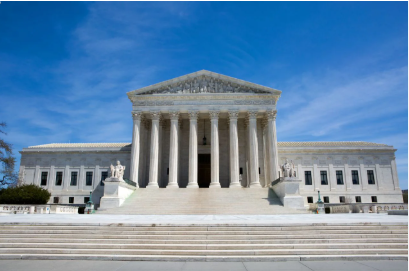When we think of museums, we often envision grand buildings housing artifacts or rare treasures. However, museums are much more than that—they are institutions of history, cultural identity, and memory preservation. Across the United States, these spaces are dedicated to ensuring that America’s past isn’t just remembered but understood, and that its lessons are passed down through generations.
But how do museums truly contribute to preserving American history? The answer lies in their mission, resources, and approach. This blog dives into how museums in America serve as the backbone for protecting and safeguarding historical narratives that have shaped the nation.
At the heart of a museum’s function is the idea that history isn’t something you just keep—it’s something you share. Museums take the remnants of our past—whether through documents, personal items, or artifacts—and give them a platform. These objects speak volumes, making history more accessible to the public.
But it’s not just about collecting objects; it’s about presenting them in a way that tells a story. This is the core of what makes museums so powerful: storytelling through the objects they preserve.
Why Museums are Important in the Preservation Process
Physical artifacts—whether a letter written by George Washington or a Native American pottery shard—hold more than just material value. They are tangible links to the past, and each piece can tell the larger story of America’s evolution.
However, the process of preserving these objects is complex. For example, a historical document might require the ideal humidity, temperature, and light conditions to prevent damage. Museums, thus, employ specialized conservators who ensure that these pieces remain in the best possible condition for public viewing and historical research.
The Museum Experience: Learning Through Artifacts
Interactive Exhibits: More Than Just Objects on Display
While many museums display artifacts, some of the best museums go beyond simply showing objects. They craft interactive experiences to engage visitors. For instance:
- Virtual Reality Exhibits: Some museums now offer immersive experiences where visitors can “step inside” history. Whether it’s through reenactments of the American Revolution or an interactive Civil Rights experience, these virtual platforms bring the past to life in dynamic ways.
- Hands-On Learning: Particularly for younger audiences, museums are embracing hands-on activities that let them touch, feel, and engage with replicas of artifacts or ancient tools. This approach brings history into the present, making it not just educational but engaging.
The Education of the Public
Museums are not only about preserving history; they are educational institutions. Many museums offer educational programs for schools and universities, creating deeper academic connections to the artifacts and stories on display.
A prime example is the Smithsonian’s National Museum of American History, which regularly offers curriculum guides to teachers and lectures to university scholars. By intertwining history with scholarly research, museums maintain their role as centers of learning.
Challenges Faced by Museums in Preserving History
While museums play a crucial role in safeguarding the past, the challenges they face are significant:
- Funding: A primary concern for many museums is financial support. Maintaining and preserving valuable artifacts often requires considerable funding, and many museums rely on donations, grants, and government funding. Without proper financing, they risk losing pieces of history to deterioration or the inability to maintain their collections.
- Climate Control and Conservation: Proper conservation of artifacts demands state-of-the-art facilities. Documents, fabrics, and objects degrade over time. The long-term care of these artifacts requires not just specialized knowledge but also high-tech facilities and skilled conservators.
- Digitization: In today’s world, digitizing historical documents and items is vital. However, this process itself is expensive and labor-intensive, as each piece needs to be scanned, cataloged, and properly archived for future generations.
Iconic Museums and Their Role in History Preservation
1. The National Civil Rights Museum
Located in Memphis, Tennessee, this museum is a powerful testament to the American Civil Rights Movement. It preserves artifacts such as personal belongings of leaders like Dr. Martin Luther King Jr. and public documents from key moments in the struggle for equality. Beyond this, it also serves as a reminder of the fight for justice in the U.S., showing the continuous journey toward civil rights.
2. The Museum of the American Revolution
This museum, located in Philadelphia, focuses on one of the most pivotal periods in U.S. history: the American Revolution. It preserves documents, weapons, and other artifacts from this transformative time, ensuring that future generations learn about the formation of the United States and the struggles for independence.
3. The National Museum of the American Indian
As a hub for Native American heritage, this museum plays a pivotal role in preserving Native American history. Through its collections, it helps educate the public about the traditions, challenges, and contributions of indigenous peoples to American society.
Looking Ahead: The Future of Museums
Adapting to a Digital Age
The future of museums is evolving with the digital age. Online exhibits, virtual reality, and interactive digital displays are all becoming more common. These technological advancements are changing how history is preserved and presented to the public. More people will be able to access artifacts and learn about America’s past from anywhere in the world.
Emphasizing Diversity and Inclusion
As history evolves, museums are also striving to present a broader, more inclusive view of America’s past. The voices of marginalized communities—including African Americans, Native Americans, and immigrants—are increasingly finding their place in museum collections and exhibits. This shift ensures that the complexity of American history is honored and represented.
Conclusion
The role of museums in saving America’s history is undeniable. Through preservation, education, and innovative exhibits, they ensure that the past is never forgotten. As we move forward, it’s crucial that these institutions continue to adapt, embracing new technologies and inclusive storytelling to preserve a more holistic history for future generations.

